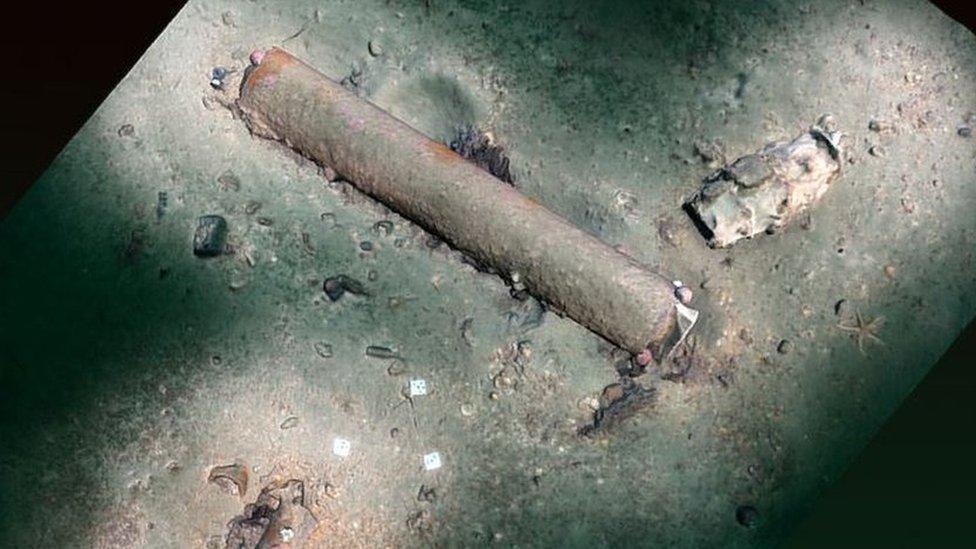German WW1 U-boat found off the coast of Shetland
- Published
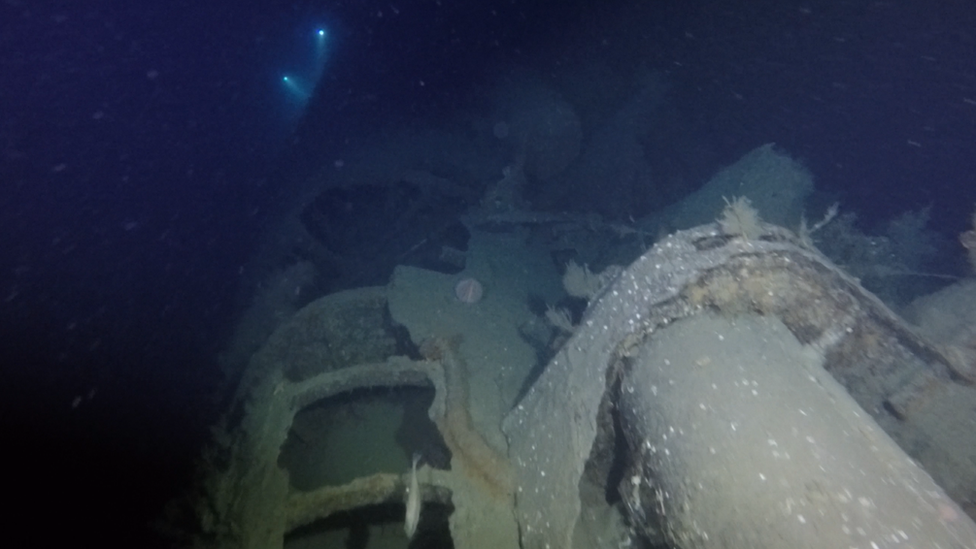
The SM UC-55 U-boat had been laying mines between Shetland and Orkney when it was forced to surface.
A World War One German U-boat has been identified by divers off the coast of Shetland.
The SM UC-55 submarine was sunk about eight miles south-east of Lerwick by the Royal Navy in 1917.
Divers aboard the Stromness boat Valhalla have become the first to inspect its wreckage.
The U-boat had been laying mines in the convoy channel between Orkney and Shetland before being forced to surface due to a technical fault.

The wreck site had been been known about since the mid-1980s when scanning equipment picked it up, but Hazel Weaver, the owner of the Valhalla, said that 10 years of planning had gone into the dive.
"This has been known about for a long time, the question was: is this the wreck we thought it was?" she told BBC Radio Shetland.
"After three and a half hours of divers being in the water down to 110m (361ft), they came and confirmed yes, this is the UC-55."
U-boats were used by Germany in both world wars, inflicting a heavy toll on merchant ships and military vessels.
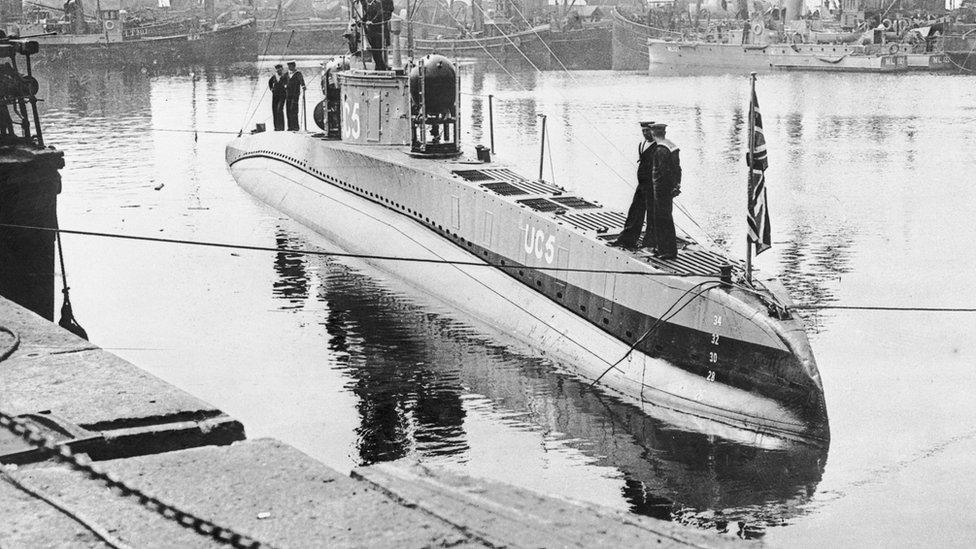
Pictured here is the SM UC-5, another U-boat which was captured by British forces a year before the SM UC-55 sank off the coast of Shetland
Despite their prevalence, only four remain intact today, while many, such as the SM UC-55, lie on the ocean floor.
The submarine met its end after a loss of trim resulted in it sinking below its maximum dive depth, resulting in some flooding but it managed to rise to the surface.
Shortly afterwards, two Royal Navy destroyers appeared and opened fire, sinking it.
Jacob Mackenzie, one of the divers who visited the wreck, said it was "eerie" being down there, given that the some of the crew had perished along with their vessel.
"You are aware of that, although I believe about 15 of the crew did escape, the rest of the crew of course didn't - so they are still inside and that's very obvious when you're looking around it," he said.
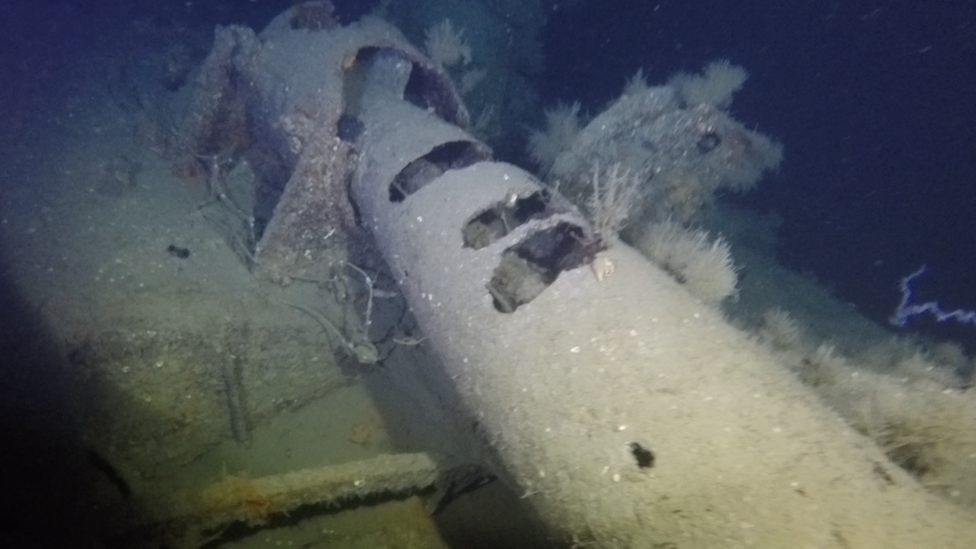
The diving team discovered the wreck more than 100 metres under the surface
The team were able to confirm the identity of the wreck because details of the damage had been recorded in the logbooks of the Royal Navy destroyers that sank the submarine.
"It certainly didn't sink by accident. This was wartime and if you haven't been to those depths before you won't appreciate that it's pitch black, it's very quiet, it is quite eerie when you swim around doing this," he said.
"In the back of your mind as well you have to remember the fact that this is essentially a grave for probably 20 men who didn't make it out alive unfortunately."
Related topics
- Published8 September 2019

- Published19 October 2016
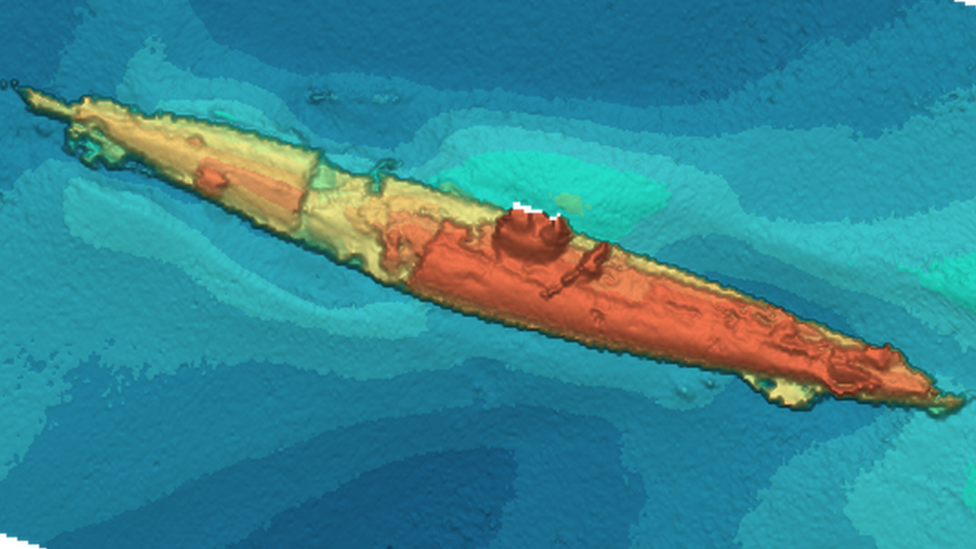
- Published23 June 2019
